Blogger: Jessie Cohen
When artist Matthew Hindley came to our printing workshop to make a series of watercolour monotypes, he had not made a print in twenty years. What’s more, Hindley had never made a watercolour monotype – a medium suggested to him by David Krut Projects (DKP) master printer Jill Ross after seeing his watercolour illustrations for the recently re-published 1990s children’s book, The Five Magic Pebbles & other stories, by Don Mattera. These paintings were exhibited at DKP Cape Town last year and are currently on show at DKP bookstore gallery in Parkwood. An example can be seen below:
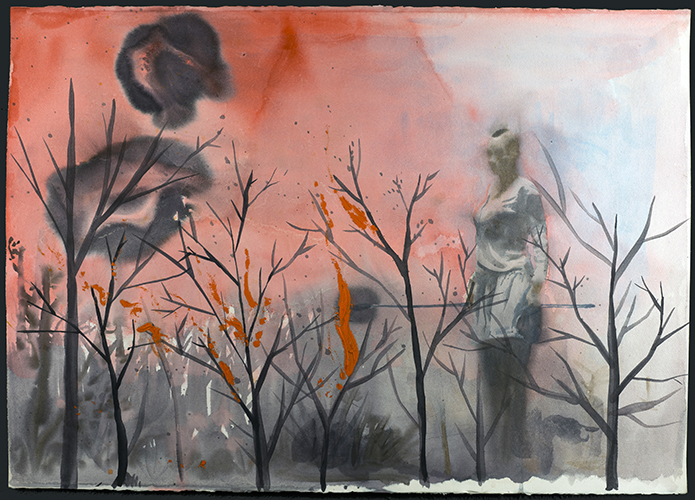
For more images and information, please click: http://davidkrutprojects.com/exhibitions/the-five-magic-pebbles-by-matthew-hindley2015ct
In the workshop, Hindley embraced the pleasures and the challenges to watercolour monotypes, pushing the medium to explore its essential qualities and trying out different techniques. The result is ten colourful and evocative unique monotypes on paper. Hindley also completed a number of drypoints which deal with similar themes of destructive beauty.
Assembling the source material
Hindley does not have a preconceived idea of the specific images he will produce, but he is considered when it comes to the subject matter on which the monotypes will be based. Before he gets to work, Hindley spreads his photographic source material across the table alongside images of preparatory paintings.
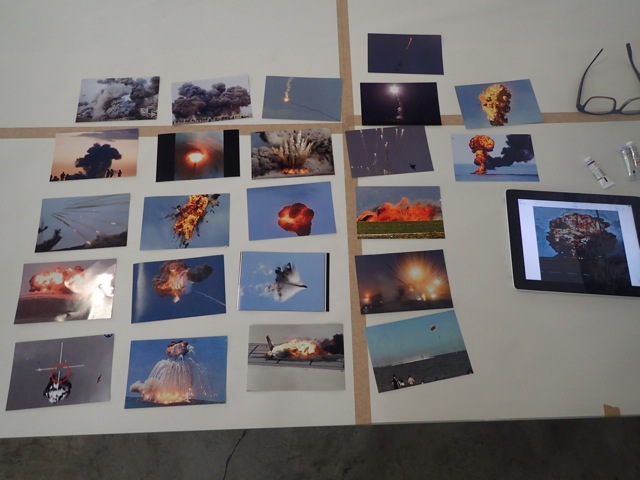
Hindley’s selection of cell phone photographs were found on Google images and newsfeeds. He is attracted to the raw quality of the images and likes that they are taken by civilians. “They are more visceral this way”, he says, adding that “the low-res, rougher image feels more real, less mediated, and has a fantastic painterly quality”.
Hindley started preparing for his week with David Krut Workshop earlier this year. He drew on the same source material, as seen above, to produce six small oil paintings, which ended up as more than studies as they are beautiful works in their own right and are yet to be exhibited. Here is a sneak preview:
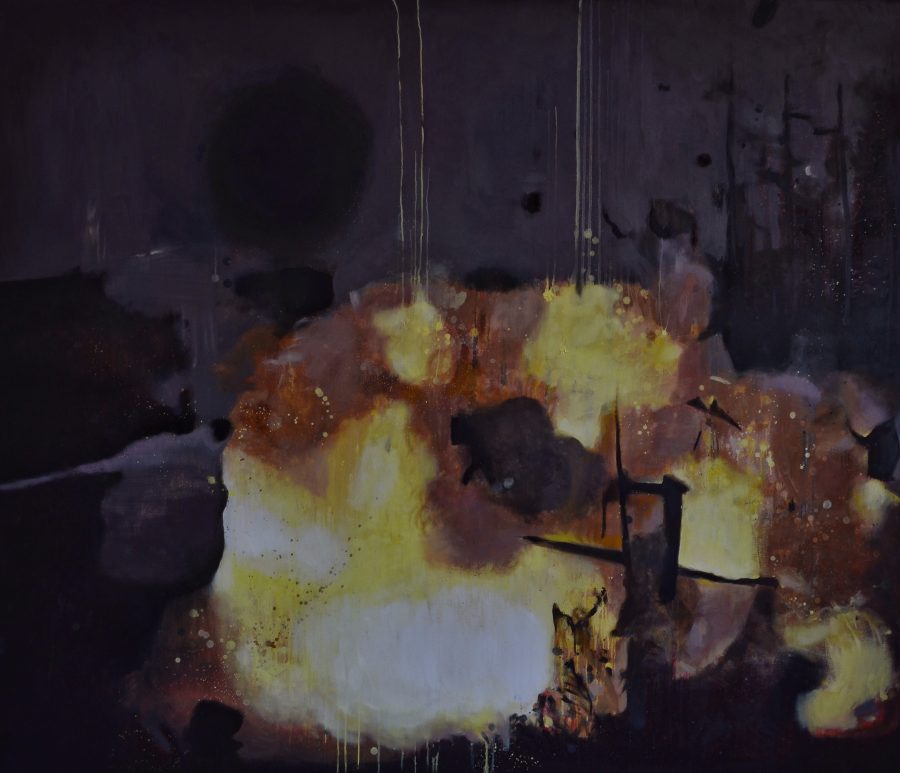
Of late, Hindley has found himself inexplicably drawn to explosions and burning objects as creative inspiration. The tension between physical destruction and aesthetic beauty is of keen interest and his work tends to revolve around a fascination with what he describes as “a disconnectedness and ambivalence towards reality”.
Making watercolour monotypes
As printmaking goes, watercolour monotypes is a relatively uncomplicated medium. The process involves applying watercolour paint, Woodies (watercolour pencils) and/or water-based crayons to a Perspex plate and soaking archival paper to ensure it is porous before placing it over the plate and running it through the press. The wet paper picks up the marks from the plate once it goes through the press and you are left with a unique piece of art which cannot be replicated.
Fireball
In Hindley’s first monotype his marks are thick and painterly. He depicts an explosion in the sky.
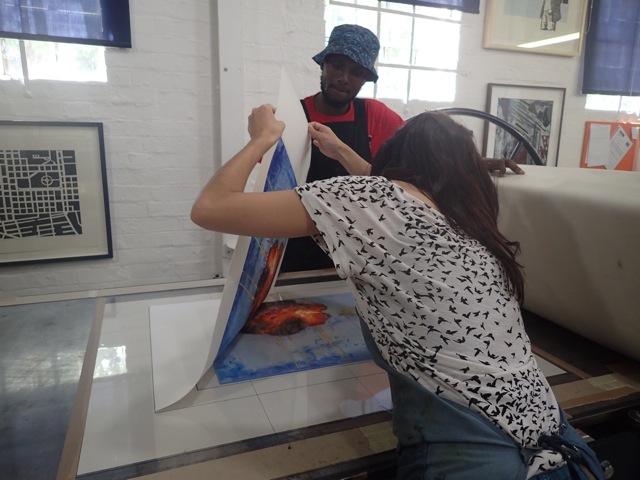
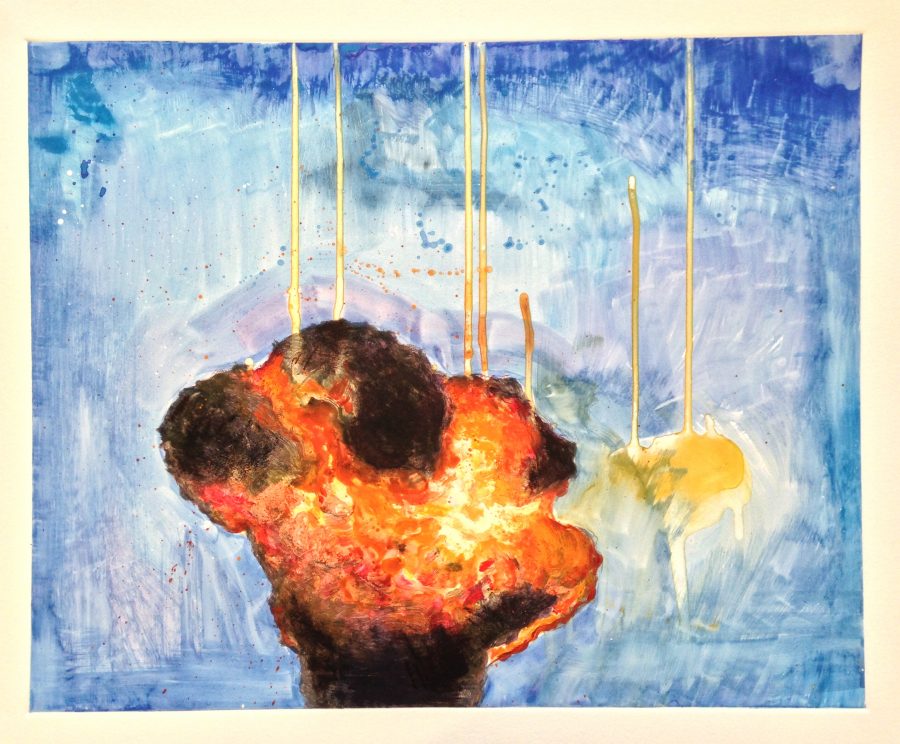
Hindley is taken by the translucency of the marks, which he describes as “a luminous glow – glassy, almost”. He also remarks on the exciting uncertainty of the printing process and the unusual quality of the flattened brush stroke when it transfers from the plate to the paper. The image is based on a photograph of a drone explosion in the sky – a similar composition to his preparatory oil painting.
Hindley works with printer Kim-Lee Loggenberg to push the boundaries of the medium by layering a series of plates onto one image with the aim to achieve a broader variation of marks and richness of colour.
“By working with more layers”, Hindley says, “I get double the pigment on the monotype. Each layer is thin and delicate.” For the paper to pick up a variety of marks and colours, Hindley layers a number of plates because, if he were to apply the same amount of layers to a single plate, there is a chance the colours will come out murky.
The Landing Strip
This is the first print where Hindley tested the multiple plate technique:
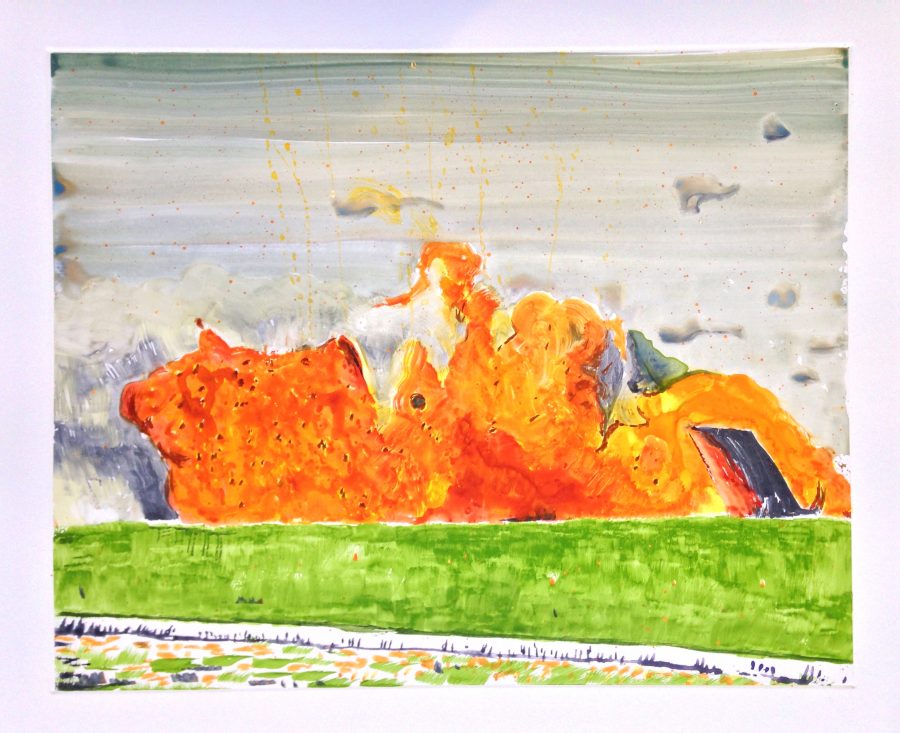
“This work is a celebration of colour – the eye-watering combination of the orange and the green” – Hindley.
The Viewing
For The Viewing, Hindley tried a loose approach, working quickly as he gets increasingly comfortable with the flow of the medium.
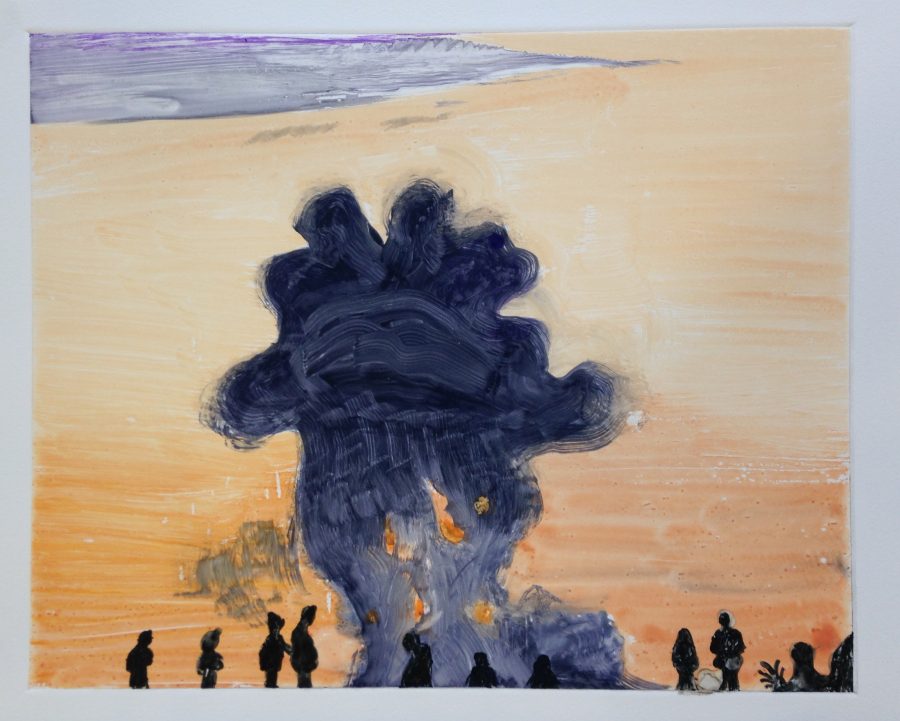
It is based on a photograph of a group of Syrians watching what might be an air strike from a hill with ominous plumes of smoke in the distance. Hindley is struck by how relaxed the people look – “how everyday this occurrence seems, as if they are watching a sunset” (Hindley).
Once again, the tension between beauty and destruction is foregrounded in Hindley’s work.
The Viewing is made up of four layers:
- Layer one: a section of deep purple to represent the sea
- Layer two: a yellow drip to indicate the far-off explosion
- Layer three: a thin layer of paint to indicate sky
- Layer four: Hindley used Woodies to reinforce the figures
Kim-Lee spritzes the paper each time before it is run through the press in order to keep the fibres moist so they will pick up the colour and the marks of the next plate. She prints the layers back-to-back so as to not waste any time because the wetness of the paper is key to the success of the overall print.
Seascape
“This print is based on an ambiguous image,” Hindley explains. “It shows a group of people standing in the sea and watching a possible submarine or drone explosion in the distance.”
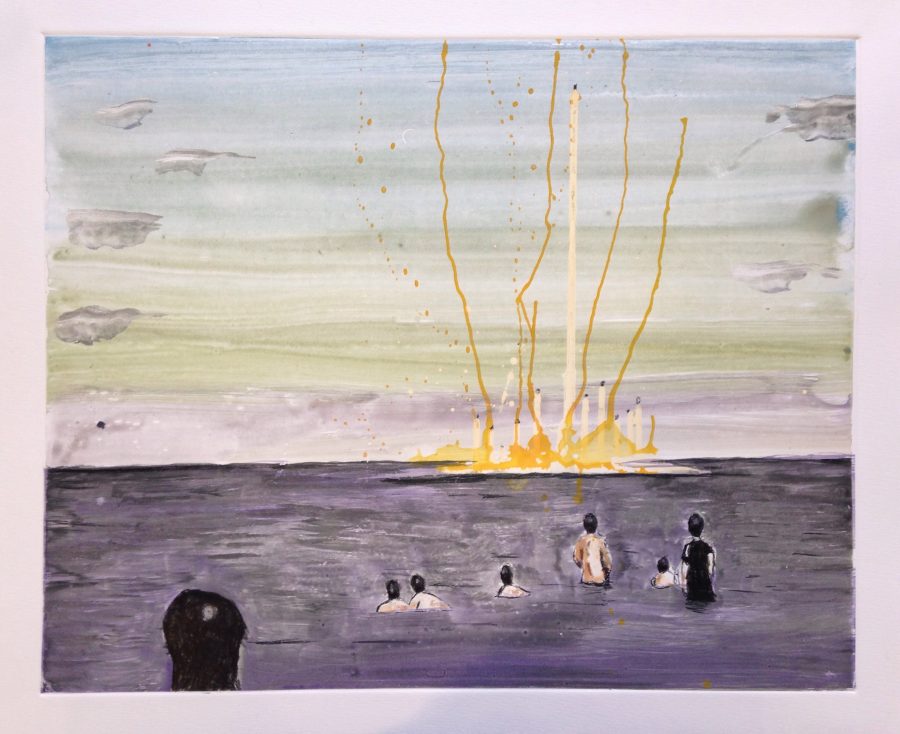
“It is not clear what is going on here. I am drawn to the mysterious mood of the image” – Hindley.
Seascape 2
“I wanted to put something unexpected in this image so, about mid-way through, I brought my painterly language to the medium by dripping water onto the plate and allowing the pigment to drop upwards” – Hindley.
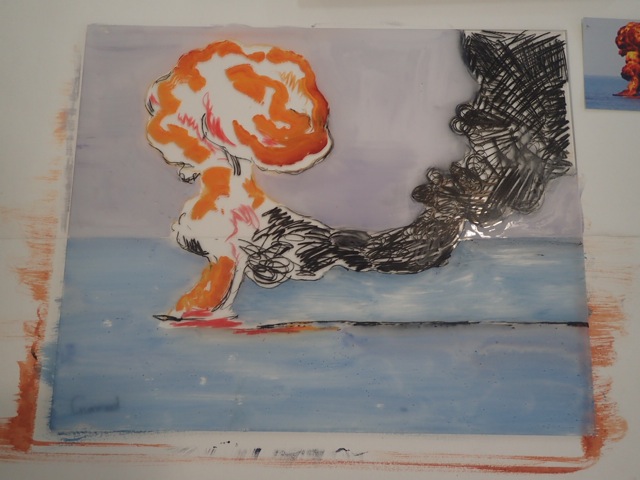
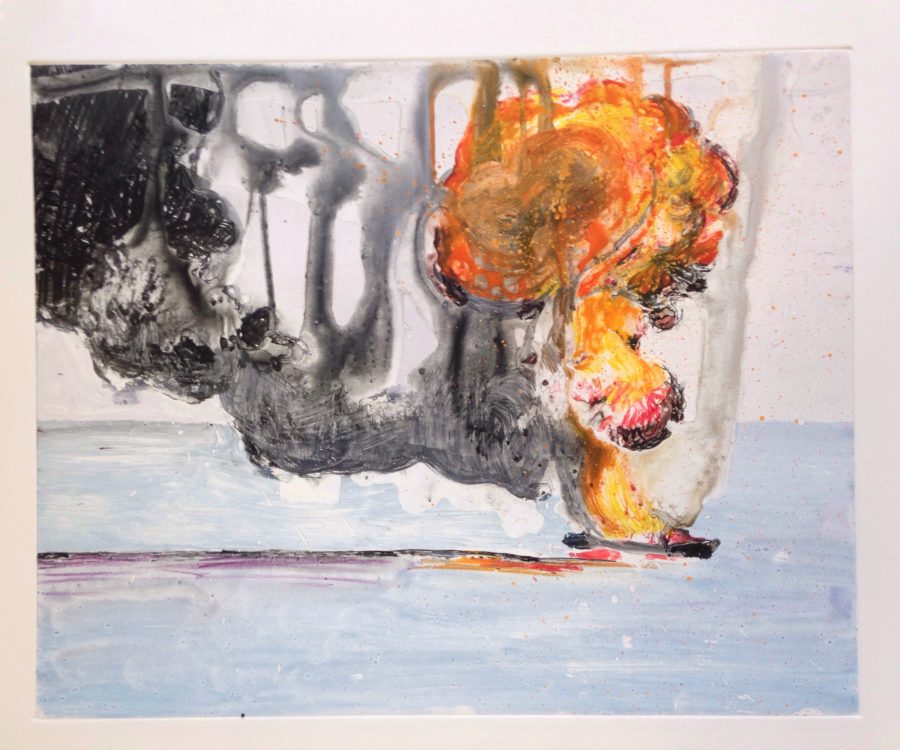
Shooting Star
For Shooting Star, Hindley applied three layers – all purple, with each layer getting progressively darker. The result is a rich variety of marks and depth of colour to depict a missile explosion in the sky.
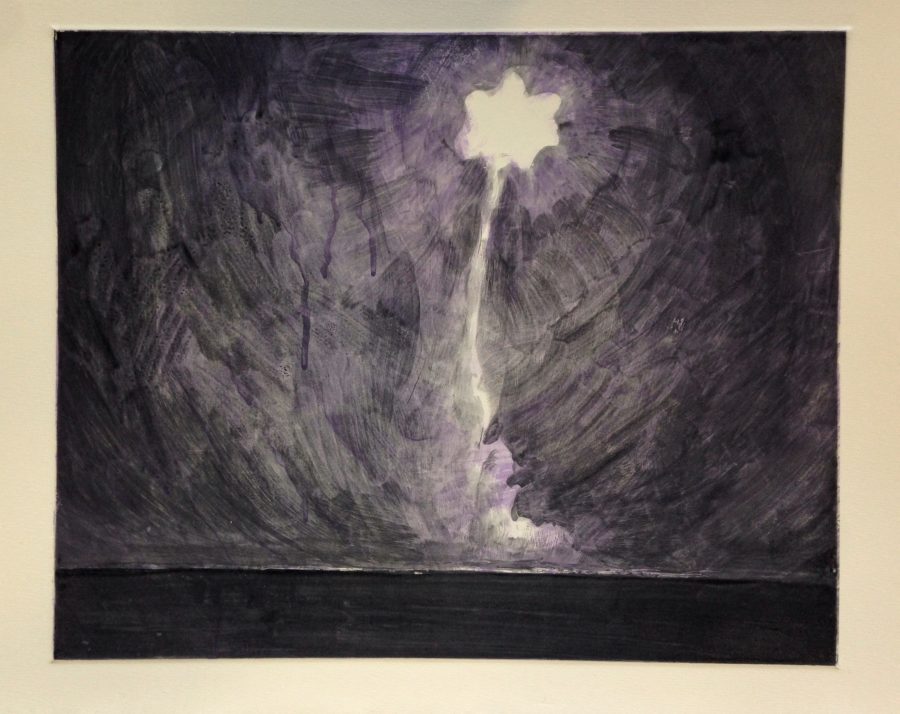
The Glowing Building
“This could be of a bomb explosion in a building”, Hindley wonders. He made the monotype using two plates – one with gradations of red, another with gradations of yellow – to create an intense flame effect.
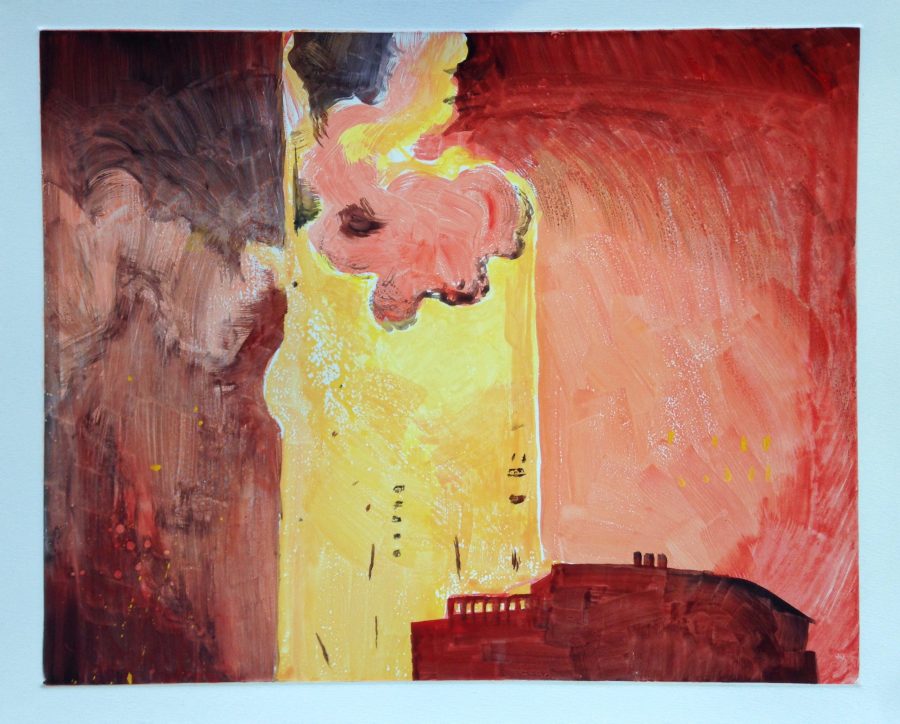
Disengagement
Hindley explains the title as “the opposite of the military definition – I intend it as a pun on the relaxed, and seemingly disconnected, figures who stroll in the foreground of a huge fireball.”
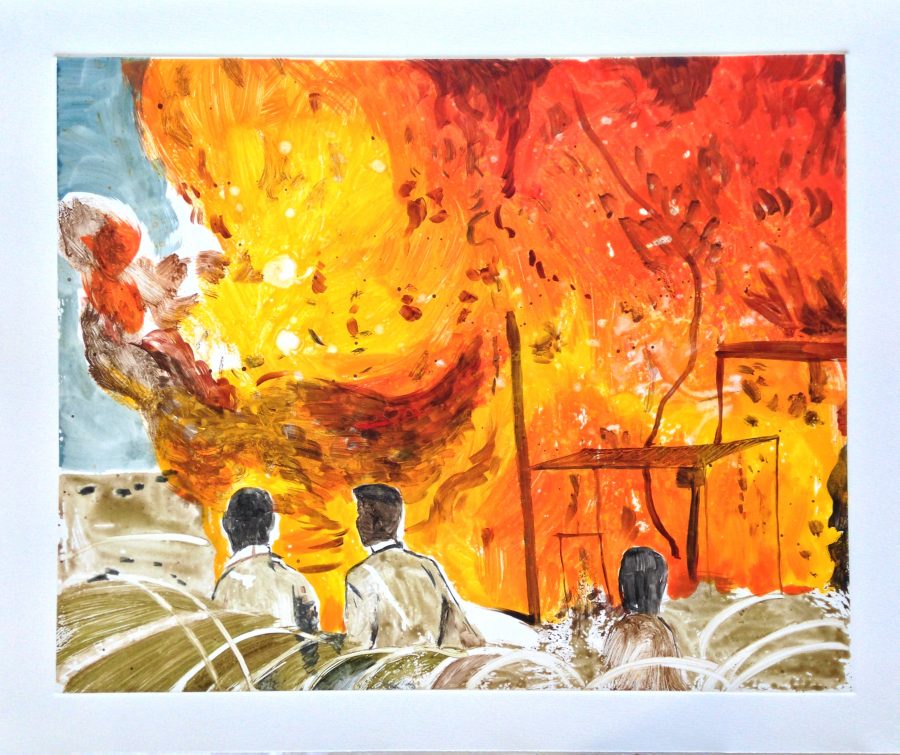
Sky Explosion
Hindley finds this image pleasurable in its surreal, abstract quality, “like a piece of fruit cut in half – so innocent and yet so menacing.”
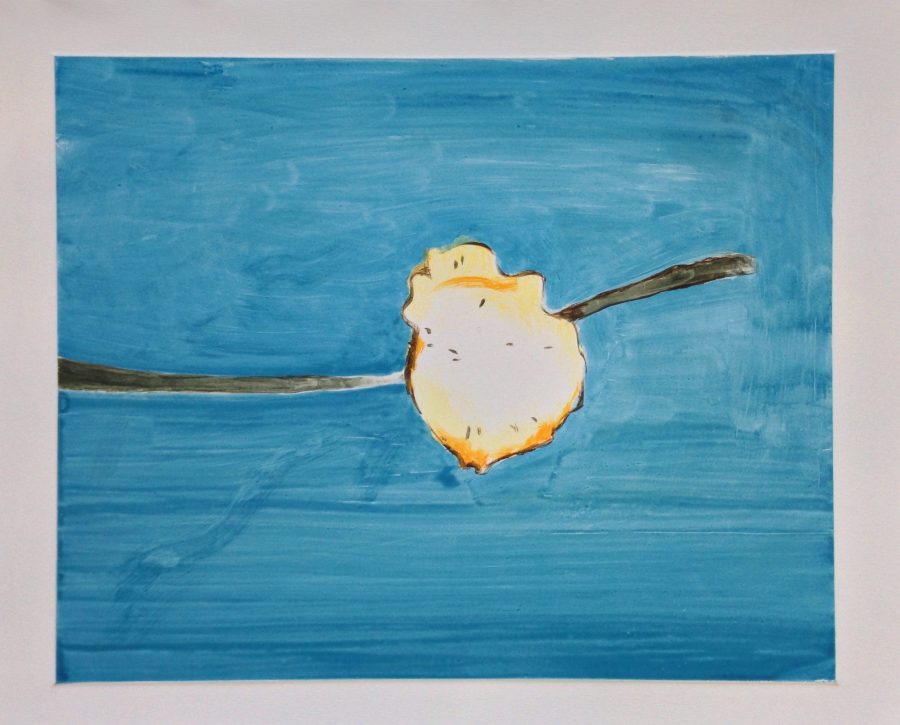
Forest in Nocturnal Light
This forest scene was completed over two plates. It is the biggest print at nearly double the size of the rest of the series. It stands out as the only image set in a distinct nature scene, but fits with the motif as there is an explosion in the centre of the still woods.
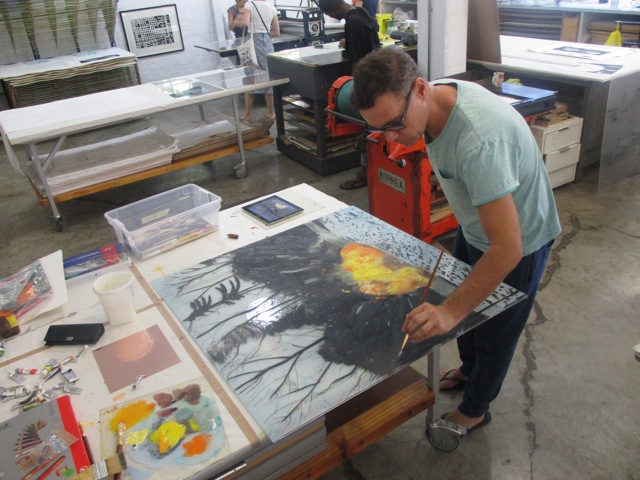
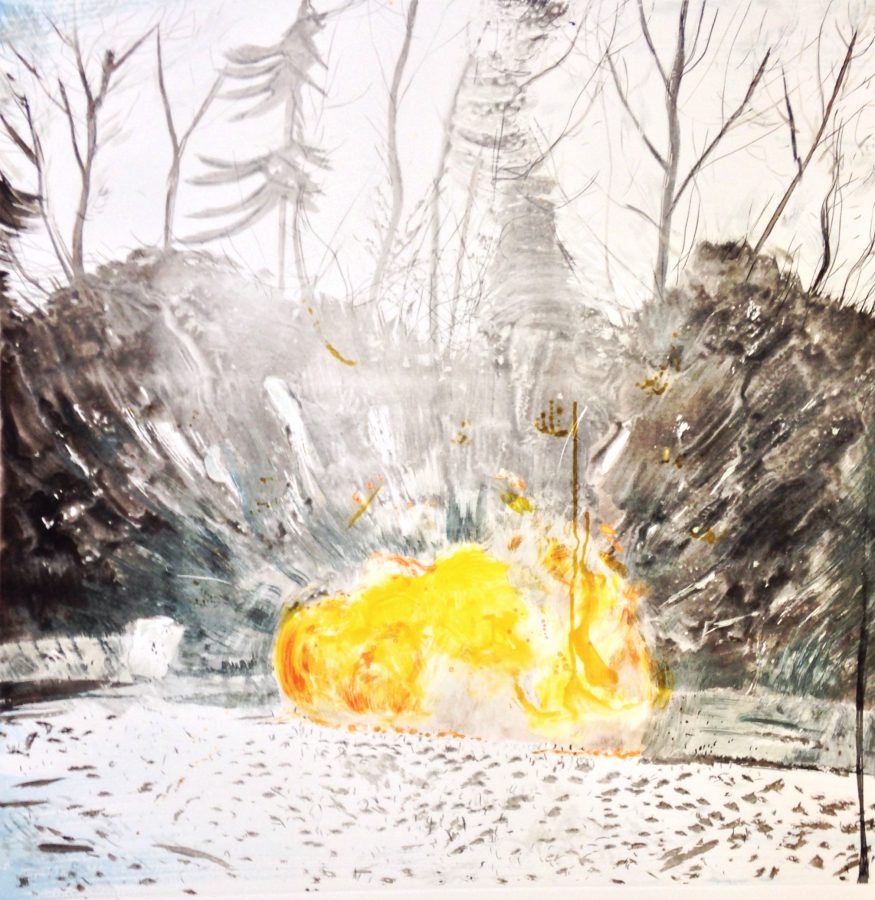
Drypoints: The Distant Clouds & The Distant Clouds (Colour)
“The drypoint technique was a revelation in terms of line. It allowed me to explore the subject in a very direct way. I love the burr and the smokey, electric line” – Hindley.
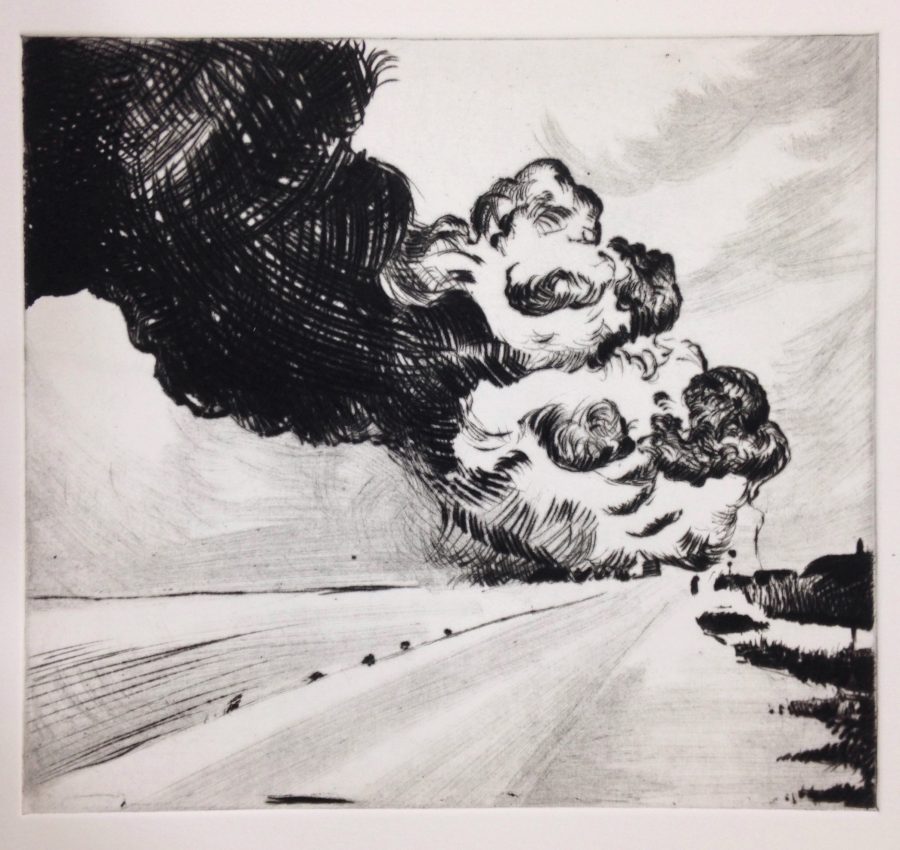
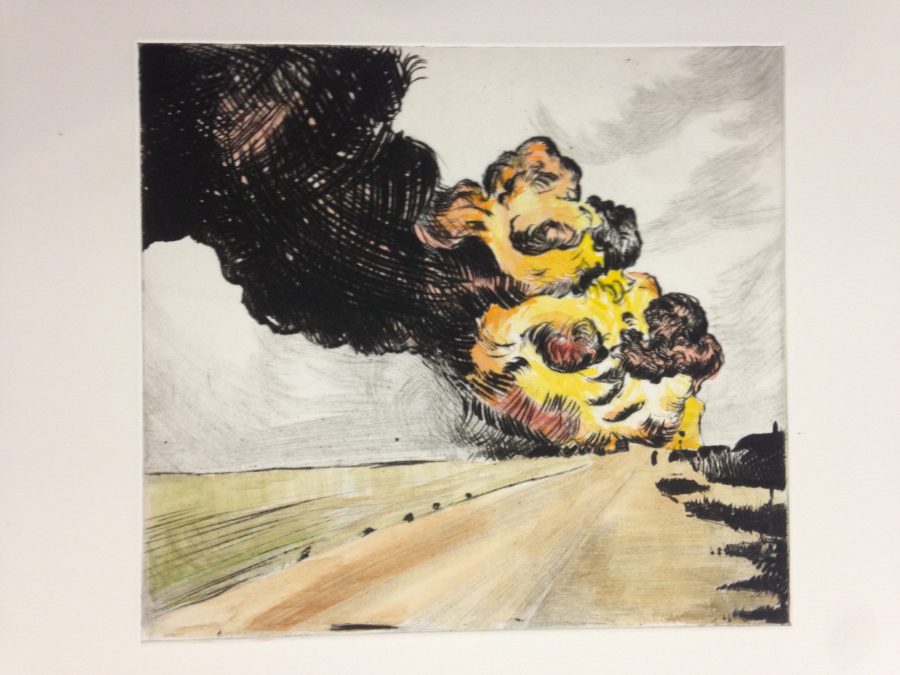
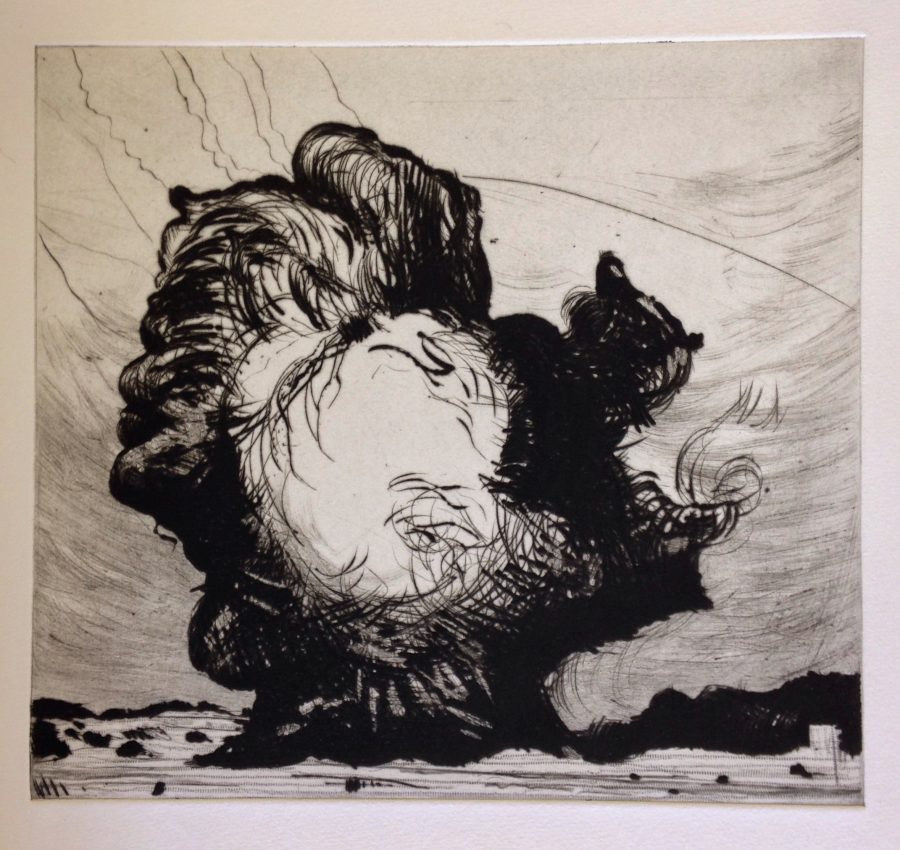
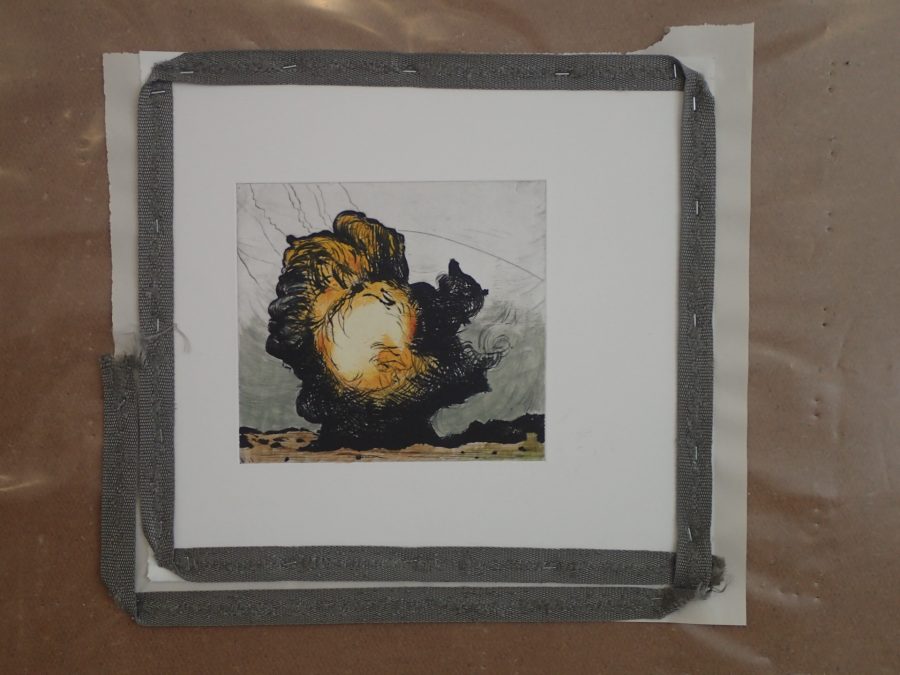
It was a pleasure to host Hindley in our workshop and to work with such inspired talent.